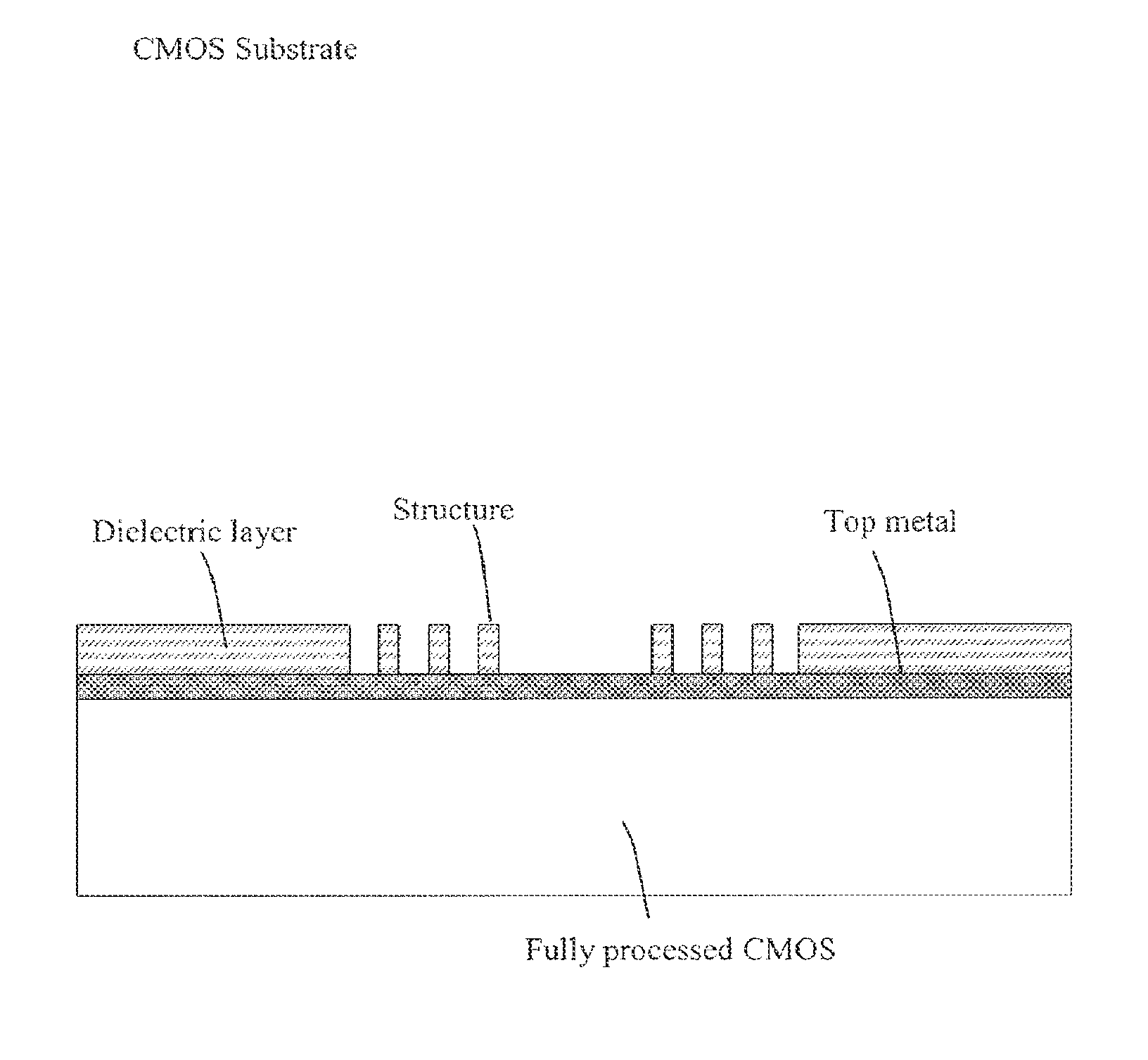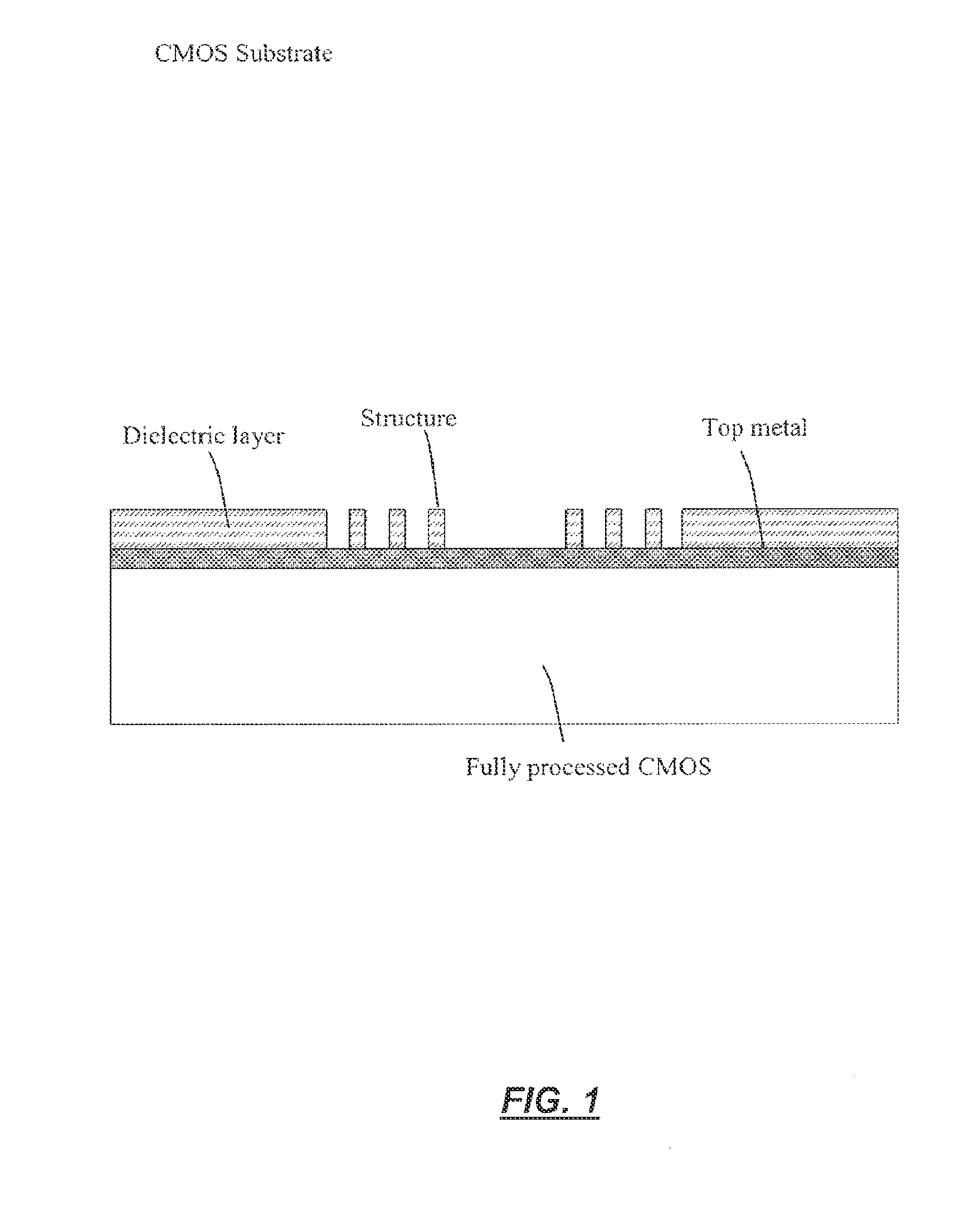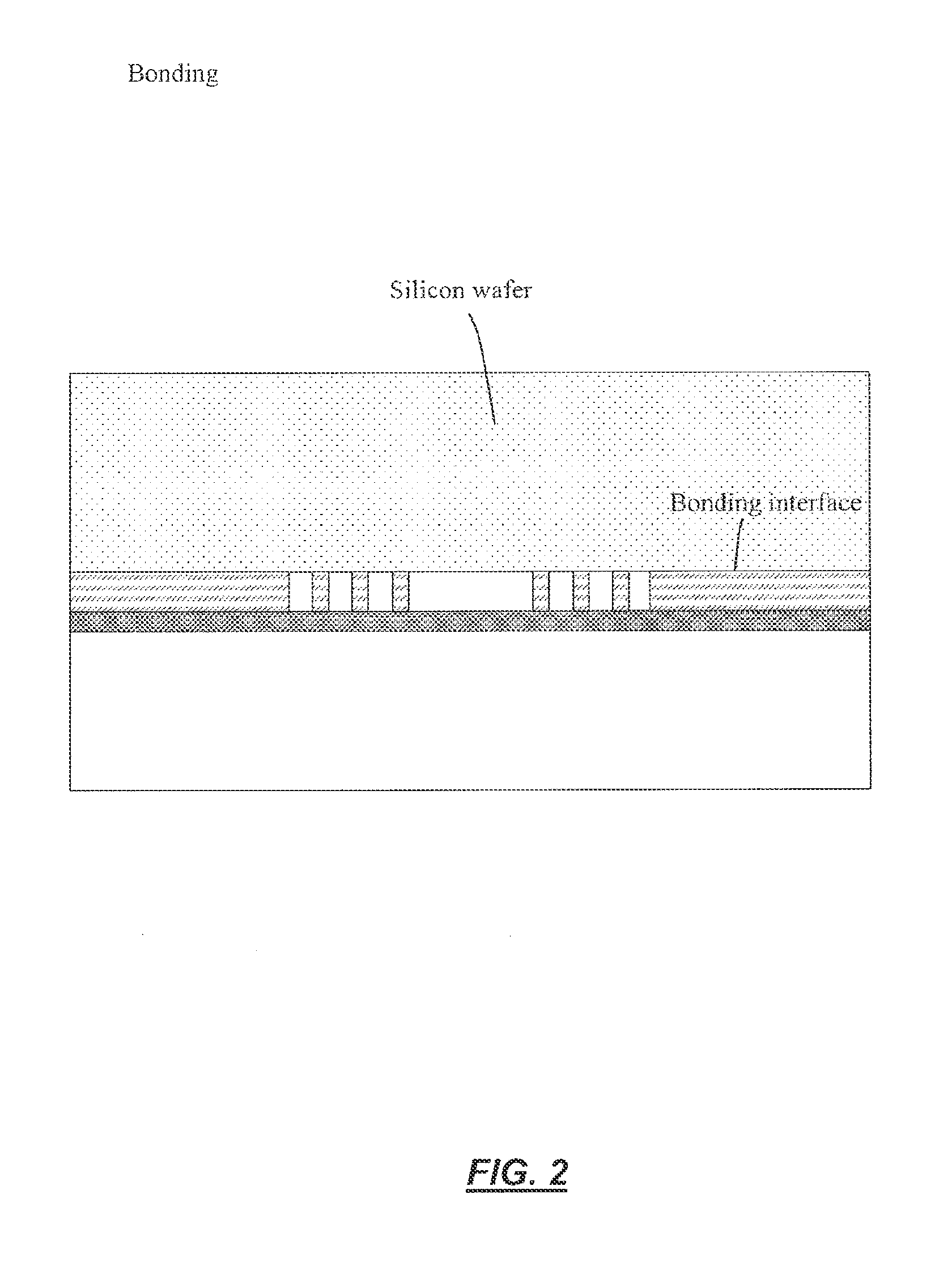Method and structure of monolithetically integrated inertial sensor using IC foundry-compatible processes
a technology of inertial sensor and monolithecene, which is applied in the direction of individual semiconductor device testing, semiconductor/solid-state device testing/measurement, instruments, etc., can solve the problems of limited integration level of mems and cmos, difficult scaling and leverage of capacity and capacity of ic foundries, and superior performance of micromachined sensors. , the effect of reducing parasitics and reducing the size of the chip
- Summary
- Abstract
- Description
- Claims
- Application Information
AI Technical Summary
Benefits of technology
Problems solved by technology
Method used
Image
Examples
Embodiment Construction
[0028]FIG. 1 is a simplified cross section diagram of components of a starting CMOS substrate according to one embodiment of the present invention. As depicted, the starting substrate is a fully processed CMOS wafer. A dielectric layer such as oxide and nitride is deposited on top of a top metal layer of the CMOS wafer. The dielectric layer is then patterned to form a structure that provides anchor points for stationary members of the mechanical sensing device.
[0029]FIG. 2 is a simplified cross section diagram of components of a monolithically integrated inertial sensing device according to one embodiment of the present invention. As depicted, a silicon wafer is bonded to the CMOS substrate. The bonding methods include but not limited to: covalent, Sprin-on-glass (SOG), Eutectic, and anodic. The bonding temperature is CMOS compatible and below 400 C.
[0030]FIG. 3 is a simplified cross section diagram of components of a monolithically integrated inertial sensing device according to on...
PUM
 Login to View More
Login to View More Abstract
Description
Claims
Application Information
 Login to View More
Login to View More - R&D
- Intellectual Property
- Life Sciences
- Materials
- Tech Scout
- Unparalleled Data Quality
- Higher Quality Content
- 60% Fewer Hallucinations
Browse by: Latest US Patents, China's latest patents, Technical Efficacy Thesaurus, Application Domain, Technology Topic, Popular Technical Reports.
© 2025 PatSnap. All rights reserved.Legal|Privacy policy|Modern Slavery Act Transparency Statement|Sitemap|About US| Contact US: help@patsnap.com



